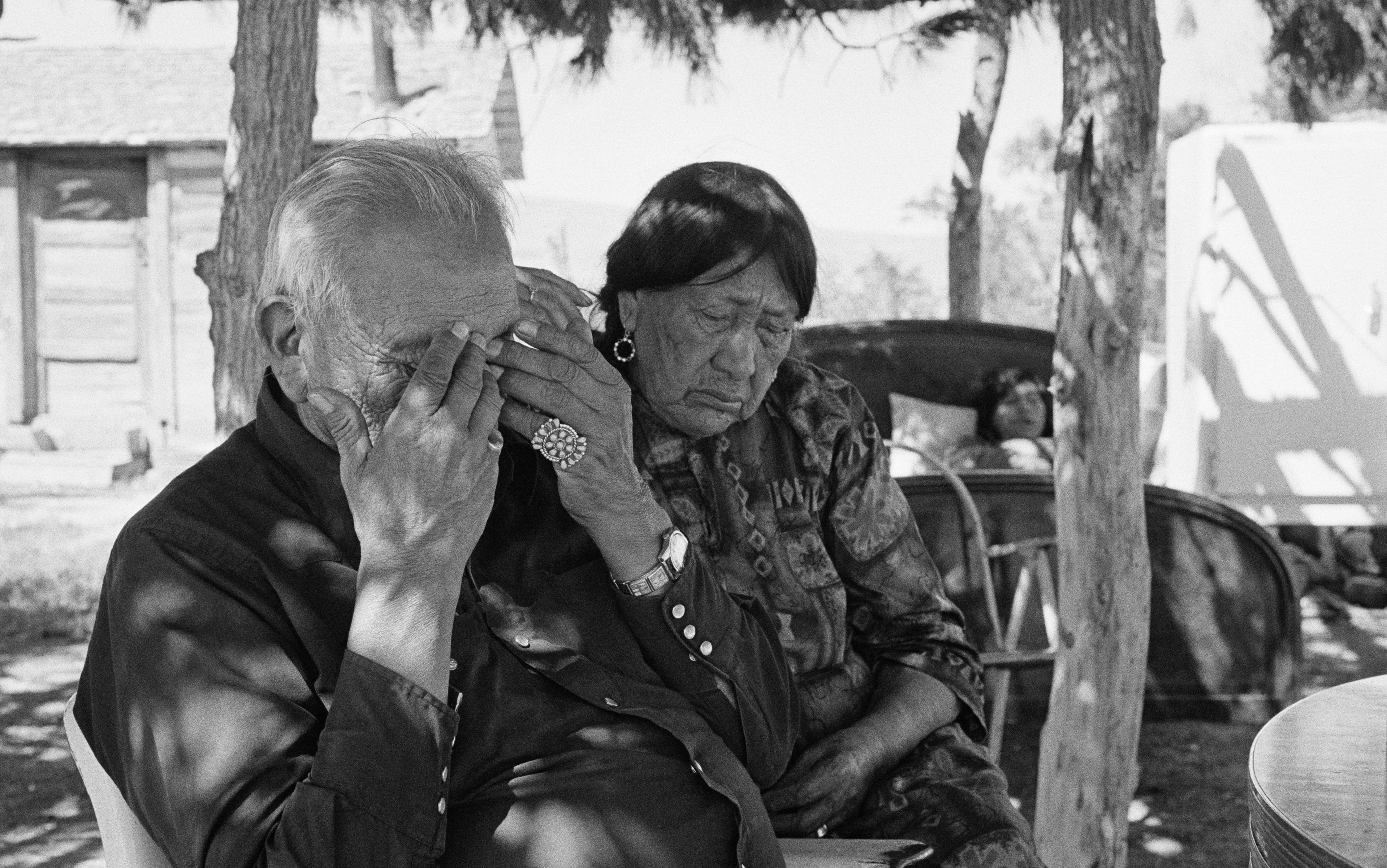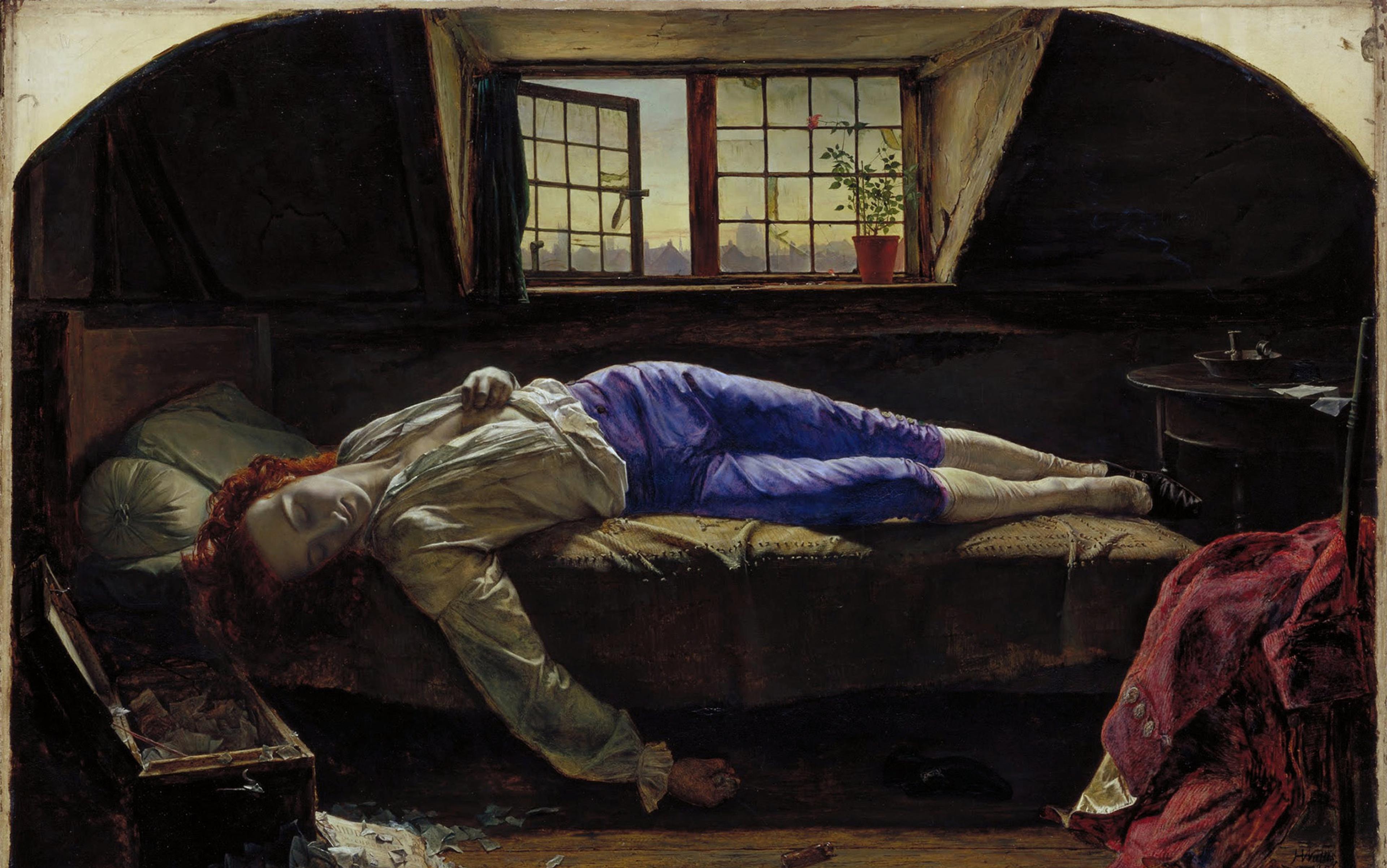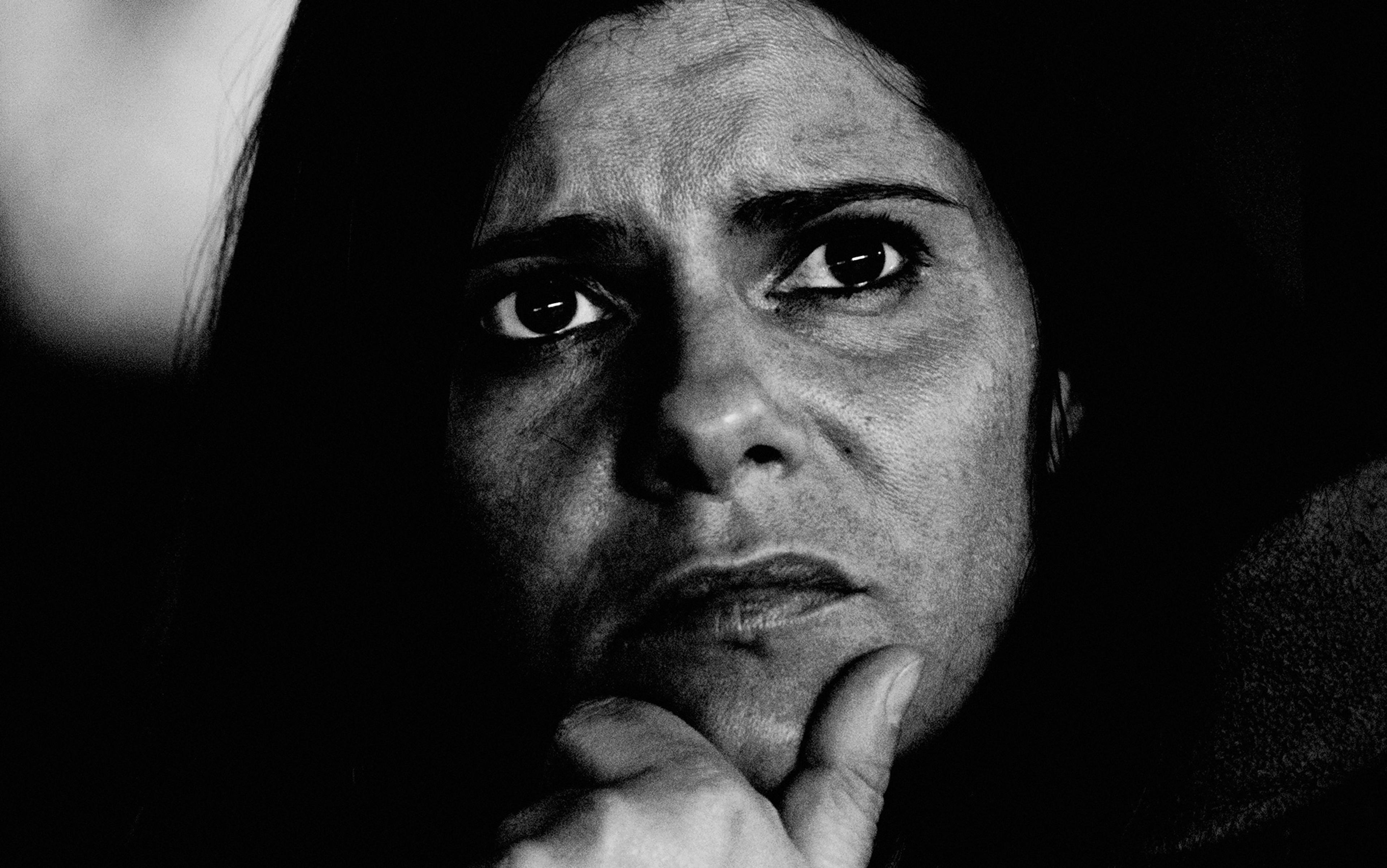A tear is a universal sign. Since ancient times, philosophers and scientists have tried to explain weeping as part of a shared human language of emotional expression. But, in fact, a tear on its own means nothing. As they well up in our eyes, or dribble down our cheeks, the meanings of those salty droplets can only be tentatively inferred by others, and then only when they know much more about the particular mental, social, and narrative contexts that gave rise to them.
We cry in sadness, grief and mourning, but also from joy and laughter. Some are moved to tears of pity by human suffering; others have wept the enraged tears of the oppressed. A tear-streaked cheek might be produced by nothing more than a yawn or a chopped onion. The Victorian journalist Harriet Martineau had tears of intellectual ecstasy running down her cheeks as she translated the ponderous tomes of the French sociologist Auguste Comte. A friend of mine, a steam enthusiast, told me that when he first saw the record-breaking locomotive, the Mallard, at the National Railway Museum, he cried. A tear is a universal sign not in the sense that is has the same meaning in all times and all places. It is a universal sign because it can signify just about anything.
If weeping were a gesture with a single meaning, part of a universal language of feeling, then it would surely signify grief. That is the state with which it has been most frequently connected. Yet there were countless examples of joyful crying on display in London last summer. Streams of Olympic and Paralympic emotion spilled out by the bucketful. On the winner’s podium, as national anthems surged, so too did the lachrymal effluvia. Pride and joy expressed themselves in copious tears. Boris Johnson, the Mayor of London, bragged about his ‘hot tears of patriotic pride’ at the opening ceremony and proclaimed the end of the games a ‘tear-sodden juddering climax’. In 1872, when Charles Darwin wrote The Expression of the Emotions in Man and Animals, it might have been true that ‘Englishmen rarely cry’, but by 2012 the mayor and others had done their best finally to scotch that idea.
I can add my own personal example too: when my son was born at St Thomas’ Hospital, with the Diamond Jubilee flotilla of a thousand vessels bobbing down the Thames outside, I wept tears of joy and relief that a truly alarming emergency caesarean had ended successfully.
Theories of tears have always struggled to do justice to their threefold nature, as secretions, symptoms and signs. Are tears to be treated like urination, like a rash, or like a work of art? Does their interpretation require the expertise of the physiologist, the physician, or the metaphysician?
Tears were comparable to urination or even perhaps to sexual secretions: something to be produced and enjoyed under cover of darkness
The suggestive language used by Boris Johnson to describe his own ocular ejaculations deliberately confused one bodily secretion with another. Those who object to public weeping often refer to it as a kind of ‘emotional incontinence’ — a phrase with origins in the psychiatric literature of the late 19th century, which implies that a similar shame should attach to a public stream of tears as to a public stream of urine. In 2011, BBC Four screened a documentary about public weeping, presented by the comedian Jo Brand. She was against it, saying that crying should be reserved for rare occasions and then take place in private. Online comments responding to the programme proved she was not alone. One remark came from someone calling himself — and I speculate here about gender — Algol60, which is also the name of a type of computer language. Algol60 wrote:
If you need to blub, go into the bog and do it privately. Small children and effeminate foreigners might be expected to do otherwise but any Briton over the age of eight should have self-control.
This kind of comment seems out of keeping with 21st-century attitudes, but it is a pungent reminder of the ideology of the British ‘stiff upper lip’, which had begun to take root when Darwin wrote his book on emotion, and had its heyday during the two world wars. The associated metaphor of weeping as incontinence suggested that tears should be an occasion for disgust and shame. For several decades in the mid-20th century, a wide-ranging government research programme called Mass Observation investigated ordinary British life. One Mass Observation questionnaire in the 1950s asked panel members, in a series of queries that also canvassed their views on margarine and foreigners: ‘Do you ever cry in the pictures? Which films, if any, have made you cry, how much, and — if you remember — which part of the film? How far, if at all, do you feel ashamed on such occasions?’
Many respondents denied feeling shame, but one abrasive participant (a man in his forties) got right to the nub of the question: ‘I have never cried “in the pictures” — I’ve sometimes urinated. “Ashamed” — yes — that I’ve chucked my money away.’ An unmarried male clerk of a similar age wrote: ‘I feel no shame for my feeling, rather a breadth of thankfulness that I can still be moved to the extent described. Possibly most of us — under cover of a dark theatre — can indulge in a little sentimentality in a similar way as we react to great sorrow — in the quietness of one’s own room.’ For both the ashamed and the shameless, tears were comparable to urination or even perhaps to sexual secretions: something to be produced and enjoyed under cover of darkness, whether in the semi-public space of the cinema, or the ‘quietness of one’s own room’, with the more luxurious sensory possibilities that suggests.
This connection between weeping and excretion, while it seems to have come into its own in the 20th century, is by no means new. In 1586 the English clergyman and physician Timothie Bright wrote an influential Treatise of Melancholie, whose many readers probably included Shakespeare, which described tears as a ‘kinde of excrement not much unlike’ urine. In a poem called ‘A Lady Who P-st at the Tragedy of Cato’, Alexander Pope lampooned Joseph Addison’s celebrated play, Cato: A Tragedy (1712) by describing a woman who responds to the drama with copious urine rather than the expected tears:
While maudlin Whigs deplor’d their Cato’s Fate,
Still with dry Eyes the Tory Celia sate,
But while her Pride forbids her Tears to flow,
The gushing Waters find a Vent below:
Tho’ secret, yet with copious Grief she mourns,
Like twenty River-Gods with all their Urns.
Let others screw their Hypocritick Face,
She shews her Grief in a sincerer Place;
There Nature reigns, and Passion void of Art,
For that Road leads directly to the Heart.
And there is a traditional Yiddish phrase for crying that translates literally as ‘pissing from the eyes’.
This old idea has been reinforced by modern science in the last century and a half. In recent decades, the most widely quoted theorist of tears has been the American biochemist William H Frey II who, since the 1980s, has been arguing that the metaphor of weeping as excretion should be taken quite literally. In an interview with The New York Times in 1982, Frey claimed that crying is ‘an exocrine process’ which, ‘like exhaling, urinating, defecating and sweating’ releases toxic substances from the body — in this case, so-called ‘stress hormones’. But Frey’s biochemical version of the incontinence theory of weeping is just a recent spin-off from a much more influential underlying set of ideas, one generated in the 19th century by the psychoanalytic model of the mind.
There are two ideas at the heart of the psychoanalytic approach to tears, ideas that, during the middle decades of the 20th century, entered into psychological orthodoxy among professionals and the lay public alike: repression and regression. The first implies that tears are a kind of overflow or discharge of previously repressed emotion, while the second presents the phenomenon of adult weeping as some sort of return to infantile, even prenatal, experiences and emotions.
In their ‘preliminary communication’ on the ‘Psychical Mechanism of Hysterical Phenomena’ of 1893, Josef Breuer and Sigmund Freud explained how repressed memories of traumatic events could, for years afterwards, give rise to hysterical symptoms. They believed that hypnosis could access these traumatic memories, which they thought of as ‘foreign bodies’ that needed to be flushed out of the psyche. Freud and Breuer reported that once a patient had put the memory into words, given it utterance, the hysterical symptoms would disappear.
Tears feature in this model of the psyche in several ways, both healthy and pathological. The proper and healthy function of tears, along with other voluntary and involuntary reactions to traumatic events, was to function as a channel for the discharge of affect or strong feeling. Affect is conceived as a psychic fluid that needs to be drained out of the system; weeping is one way to achieve that. As an example of another such expedient, Breuer and Freud suggest acts of revenge. Tears, then, alongside words and deeds, are affect-discharge mechanisms, overflow channels, release valves.
While tears can be a sign of healthy catharsis in the Freudian model, they could, in other circumstances, be pathological, as in the case of Frau Emmy von N. She came to Freud complaining of confusion, sleeplessness and bouts of tears, which lasted for hours at a time. Freud decided that her tears were a hysterical symptom. Another of his cases, however, involved a woman who wept regularly on the anniversaries of her husband’s illness, decline and death. Freud described these as private, tearful ‘annual festivals of remembrance’. In this case, he insisted that the weeping was not hysterical, but was a ‘postponed abreaction’ — a delayed but healthy working out of affect, a belated expulsion of a traumatic foreign body.
Freud’s theories echo certain ideas proposed by Darwin and other evolutionary theorists in the 19th century, according to which weeping was one of many channels through which excess nervous energy could overflow. Tears, for Darwin, were never more than a side-effect of some other, useful behaviour. He started from the observation that the reflex secretion of tears was initially caused by ‘the irritation of any foreign body in the eye’. He then hypothesised that in cases of loud infant screaming, during which the eyes were closed tightly, that same reflex could be brought into action by pressure on the lachrymal glands. Over many generations, Darwin speculated, the association of tears with infant screams of pain and hunger gradually became extended to painful mental states of all kinds, so that tears could be produced even in the absence of irritating foreign bodies, or of screams. And thus, in the Freudian picture of tears washing away psychic foreign bodies, as well as in the imagery of mental fluids and bodily overflows, Darwin’s influence is clearly visible. Freud’s account is reminiscent of Darwin in one other way too, since it emphasises that weeping serves ‘no purpose whatever’ behaviourally speaking, other than to get rid of ‘increased cerebral excitation’ and to allow the excitation to ‘flow away’.
Contrary to appearances, he said, there was no such thing as weeping for joy
If Freud and Breuer understood weeping as essentially an excretory function, one in which tears could be associated symbolically with other bodily fluids, the psychoanalytic theorists who came after extended this framework in a multitude of weird and wonderful ways. In a couple of articles in the 1940s, the influential American Freudian Phyllis Greenacre put forward the view that neurotic weeping in women was to be understood as a displacement of urination. Involved in this theory was the idea of ‘body-phallus identification’ and the production of tears by women as an attempt to simulate male urination.
Greenacre subdivided the phenomenon into those women who exhibited ‘shower weeping’ and those who displayed ‘stream weeping’. The first type weeps inordinately, shedding floods of tears; the second allows a quiet stream to trickle down the cheek. Both types were explained with reference to a ‘struggle about urination in the infantile period of life’, including a strong element of penis envy. The difference between the psyches of these two kinds of women, roughly speaking, was that the ‘shower’ weeper was sadly resigned to her lack of a penis while the ‘stream’ weeper was still in revolt, harbouring illusional ideas of possessing a male organ and weeping in neurotic imitation of the longed-for male urination observed in childhood.
Not everyone put such emphasis on urination as a template for weeping. For other psychoanalysts, the key identification was between tears and amniotic fluid. In a lecture to the Society of Medical Psychoanalysts in New York in 1959, Thomas Szasz postulated that weeping represented an unconscious regression to the prenatal state in which the body is bathed in amniotic fluid. Weeping, then, was a regressive fantasy of return to the saline wetness of the womb.
But what would a psychoanalyst say about those tears of joy and pride that were so much on display at London 2012? ‘Crying at the Happy Ending’ is the title of a classic paper by the analyst Sandor Feldman, published in 1956. Contrary to appearances, he said, there was no such thing as weeping for joy. Those who cry at the happy ending of a film or at a moment of pride or joy in their own lives — at the birth of a child, or when reunited with a loved one who had been away or in danger, or, we might add, when receiving an Olympic gold medal — might think they shed tears of joy. In fact, on Feldman’s view, these are all merely cases of a delayed or displaced discharge of negative affect.
Underlying moments of pride or joy, Feldman claimed, was an awareness of the transitory nature of life and happiness. Seeing small children might make us cry tenderly, but it is because we know that they, like us, will lose their innocence, and that the infant idyll will pass, to be replaced by the ugly adult world. ‘Small children’ themselves, Feldman observed, ‘do not cry at the happy ending: they smile because they do not yet accept the fact of death. Crying at the happy ending probably starts when death is accepted as an inevitable fact.’ We cry, Feldman concluded, at the sad end that is sure to come: ‘There are no tears of joy, only tears of sadness.’
The incontinence theory of weeping is not currently in scientific vogue, despite its continuing popularity with some of the wider public. William H Frey II’s experiments, purporting to demonstrate that emotional tears serve as vehicles for the excretion of stress hormones, have not been successfully replicated by others. Freudian concepts of repression and regression no longer reign supreme. The idea that when women weep they are seeking to replicate the act of male urination, longed for since infancy, is a doctrine as quaint and incredible as anything produced by ancient physicians or medieval theologians. And the most recent research on the science of crying — surveyed in books such as Why Humans Like to Cry (2012) by the neuroscientist Michael Trimble and Why Only Humans Weep (2013) by the psychologist Ad Vingerhoets — does not support the idea that crying is an overflow of affect, an excretion, or a kind of catharsis.
Trimble and Vingerhoets both look to the history and evolution of cultural forms, including music, drama, literature and religious ritual, as well as to their own scientific disciplines, in search of a better understanding of this mysterious human phenomenon. Both conclude that the mental states which make humans cry are universal. But the categories they use to explain those triggers are so wide and vague as to include almost anything.
A tear on its own means nothing. A tear shed in a particular mental, social, and narrative context, can mean anything
For Trimble, the emphasis is on tragedy, grief, empathy, compassion, and hope. However, his account of the underlying neurology relies on connecting tears with that most nebulous of psychological categories, ‘emotion’. Now that scientists of the mind have conclusively rejected a division, psychological or neurological, between cognitive and affective processes, ‘emotion’ could mean, more or less, any mental state.
Vingerhoets’s list of the key antecedents of tears is similarly broad. He talks about states of helplessness and loss, but also includes personal conflict, anger, rejection, feelings of inadequacy, self-pity, joy, and the emotions produced by music and films. For Vingerhoets, almost any emotional state generated in the context of infantile isolation, maternal bonding, romantic relationships, and social connectedness can provide an occasion for weeping. In other words, tears can be produced either by emotional isolation, or by an emotional encounter with another; either by loss and sorrow, or by success and joy.
Darwin rightly noted that tears could not be neatly associated with any single kind of mental state. They can be secreted ‘in sufficient abundance to roll down the cheeks’, he wrote, ‘under the most opposite emotions, and under no emotion at all’. A tear on its own means nothing. A tear shed in a particular mental, social, and narrative context, can mean anything. ‘Tears, idle tears,’ wrote Alfred Tennyson, ‘I know not what they mean.’ Yet he, and we, continue to feel compelled to interpret them, to try to distil their meaning.






